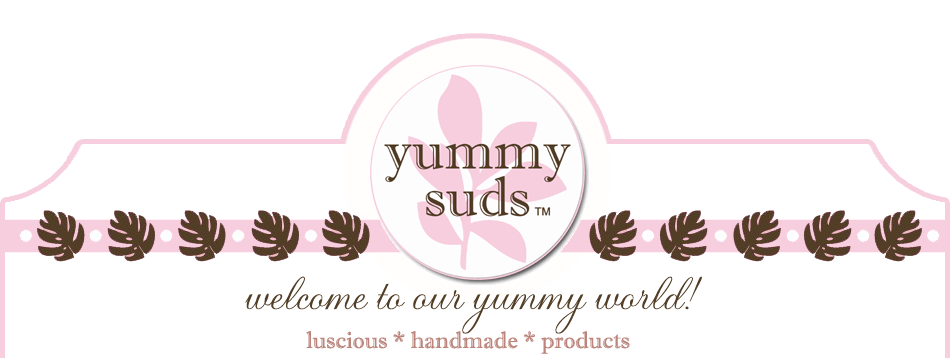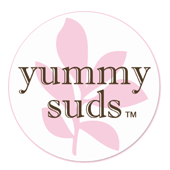 *photo taken from Cream Soap Naturally e-book cover
*photo taken from Cream Soap Naturally e-book coverOr my adventures with cream soap, I should say! ;)
If you are considering making cream soap, here are a few necessary steps that will help make your journey with cream soap a success!
1. Join the cream soap group on yahoo.
2. Download the cream soap bible aka Cream Soap Naturally; an e-book full of the exact steps you need to take to make cream soap...and what NOT to do.
3. Order some KOH (potassium hydroxide) which is different from our sodium hydroxide lye. I found mine here, at Essential Depot or you can order at thechemistrystore.com, but ED has better prices.
4. Order a small bottle of Phenolphthalein. This is what you use to test the pH of your cream soap. I found mine at the sciencecompany.com. *you only use a drop to test, so the smallest bottle will last for years.
Ok, you'd be ready to go. Well, after reading the handbook, you're ready to make a small batch of test soap. Not to resell....just to get use to the making and finished product of cream soap.
I'm using a recipe I found in the recipes section of the cream soap yahoo group. **Sorry, I had a recipe posted, but is considered infringement of the cream soap groups rules, so you will have to go thru the steps and join the group, then find a recipe that you can follow along with.**
Always remember, Safety First when working with lye. I wore a long sleeved shirt, gloves and goggles while making this soap.
Get all of your ingredients out and ready....

I measured my stearic acid out in a bowl.

I then transferred to a pot and melted it on the stove top. Doesn’t take long…so watch it as it melts.
I weighted out my oils and used the stove top on low.
I then weighed out my distilled water in a plastic pitcher.

I weighed out my potassium hydroxide and sodium hydroxide, pouring each right on top of the other. The KoH sounds like glass when you pour it, interesting....


Pour the lyes into the water in a well ventilated area.
Stir the water until it’s all dissolved and the water is clear.

I added the lye solution to my melted oils to the pot on the stove. I then used my stick blender and started blending. The consistency changed from liquid to a lumpy
mashed potato texture.

I continued blending on high and start to see more changes to the consistency, now it's like a thick syrup or honey.


I stopped blending with a stick blender and went to a hair stir with a big spoon.
I placed the lid on my pot and put in a 250 degree PREHEATED oven.

Air will get trapped and it will inflate the soap, so you will need to stir it regularly to turn it over. You'll notice the soap will start to become like a solid blob and will start to use the technique called "chunking" which takes some elbow grease.


Check you soap about every 30 minutes. Lots of babysitting here! lol
Stir or "chunk" it down and continue to cook.

My soap has been cooking of a little over 1.5 hours. It looks clear with a yellow tinge to it. I start to test the soap with the phenol at this point.
I take a little bit of the raw soap out, add the recommended amount of Phenol and mine was pink (not finished), so back in the oven to cook!

I weigh out my super-creaming ingredients and add to my soap

I add the mixture to my soap, stir and put the lid back on and back in the oven
Once my soap was finished, I turned the heat off and removed from the oven to cool.

I covered mine with saran wrap and stuck it in the fridge overnight to cool.
The next day, wow! It's opaque and looks like really thick mashed potatoes!


Give it a good stir and voila! It's starts to look creamy!

Day 5, after stirring.


So, that's the status of the cream soap. It's day 5 and I only have....oh, about 5 weeks to go! lol
This stuff needs to 'rot' aka cure to become the smooth and creamy stuff....so I will keep you posted!
I hope this tutorial has been helpful and/or encouraged you to take the cream soap challenge, where fluffy clouds of cream soap and fabulous shave creams await! :)
peace~love and learning,






















Great tutorial, Kim! Making cream soap is very similar to making liquid castile, though with liquid the cook time is longer and the "rotting" period is less. I'm looking forward to your updates :)
ReplyDeletewhat? huh? who?
ReplyDeleteyou know i have the patience and attention span of a gnat, lol...thank you for introducing us to something new:)
Tx J!
ReplyDelete:) and that makes two of us, Patrice!
That was really interesting! I'm not sure I have the patience either but it sure does look lovely!
ReplyDeleteAwesome guide and post in general - reposted with links on our new blog, been reading YS on and off for a while but just getting started with more online work so I look forward to swapping ideas and recipes!! Thanks, Dan & Lizzie Callum
ReplyDeleteThanks for the great tutorial and recipe. I made this soap last thursday and it turned out to be a great soap. Your tutorial is going to be famous now in the Netherlands because I posted a link to your webside at the Duch soapmakers forum.
ReplyDeleteKInd regards, Inez
You are welcome! Join the cream soap group, there is a lot of information in the forum with recipes, like the one you see above.
ReplyDeleteCheers,
Kim
Hi Kim,
ReplyDeletethanks a for your great Tut. I always need a lot of pictures in a tutorial, otherwise it doesn't works. I'm member of the cream soap group on yahoo. So, could you tell me only the name of the recipe? So I would download it in the "Files"-Section and start to make cream soaps step by step with your tutorial. ;o)
Thanks in advance,
Kathrin.
Hi Kathrin!
ReplyDeleteThis recipe is the basic cream soap recipe, and is found in the cream soap naturally ebook. Cream soap is fun but took some time. It's a labor of love, for sure :) Good luck
Cheers,
Kim